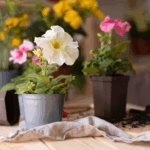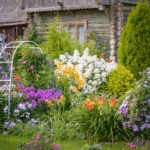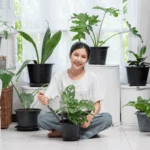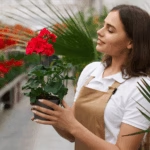Introduction
Container gardening is perfect for those with limited space, but many beginners worry that small pots will limit their harvests. The good news is that with smart techniques, you can grow a surprising amount of food in even the smallest containers. By choosing the right plants, soil, and setups, you can turn a balcony, patio, or windowsill into a productive mini-garden.
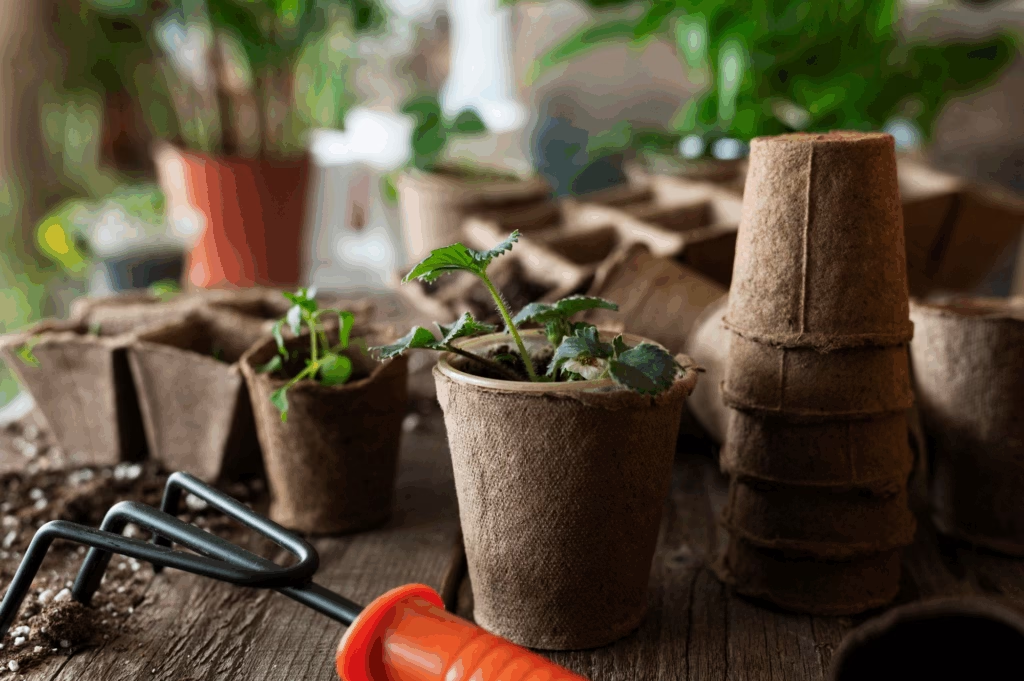
This guide explores small container gardening hacks for big yields, helping you maximize space while keeping plants healthy and productive.
1. Choose the Right Container Size
The size of your container directly affects plant growth and yield.
- Leafy greens like lettuce and spinach can thrive in shallow 6–8 inch pots.
- Root vegetables like carrots and radishes need deeper containers (10–12 inches).
- Tomatoes and peppers require large containers (at least 5 gallons).
Hack: When in doubt, go for the largest container you can fit—more soil means more root growth and bigger harvests.
2. Use Vertical Gardening Techniques
Maximize vertical space by training plants to grow upwards.
- Install trellises for beans, cucumbers, and peas.
- Use wall-mounted planters or tiered stands.
- Grow strawberries in vertical towers or hanging baskets.
Related: Check out balcony gardening ideas for more vertical gardening inspiration.
3. Invest in Quality Soil Mix
Good soil is the foundation of a productive container garden. Avoid using garden soil alone, as it compacts easily. Instead, make a lightweight mix:
- 50% potting soil
- 25% compost
- 25% perlite or coco coir for aeration
Hack: Add worm castings to boost nutrients naturally and support plant growth.
4. Companion Planting in Containers
Growing compatible plants together saves space and improves yields.
Examples:
- Tomatoes + Basil: Basil repels pests and enhances tomato flavor.
- Carrots + Radishes: Radishes grow quickly and loosen soil for carrots.
- Lettuce + Onions: Onions deter pests while lettuce shades the soil.
5. Succession Planting for Continuous Harvests
Instead of planting everything at once, stagger sowing.
- Plant lettuce every 2–3 weeks for a steady supply.
- Replant fast-growing radishes after harvest.
- Rotate crops seasonally for better yields.
This ensures your small containers produce food throughout the year.
6. Use Self-Watering Containers
One of the biggest yield-killers is inconsistent watering. Self-watering containers maintain steady moisture levels, reducing stress on plants.
DIY Hack: Repurpose a plastic bottle as a drip irrigation system by poking holes and burying it near plant roots.
Further Reading: Learn about hydroponic farming for even more water-efficient methods.
7. Fertilize Smartly
Plants in small containers quickly deplete nutrients. To maintain high yields:
- Use organic liquid fertilizers like compost tea or seaweed extract every 2 weeks.
- Apply slow-release granules at the start of the season.
- Top-dress soil with compost for long-term nutrition.
Hack: Crush eggshells and sprinkle them in containers to add calcium and prevent tomato blossom end rot.
8. Choose High-Yield Crops for Containers
Some crops naturally produce more in small spaces. Best options include:
- Leafy greens (lettuce, spinach, kale)
- Herbs (basil, parsley, mint, coriander)
- Bush beans
- Cherry tomatoes
- Strawberries
Avoid space hogs like corn or large pumpkin varieties.
9. Prune and Harvest Regularly
Pruning encourages plants to focus energy on producing fruit and leaves.
- Pinch off tomato suckers to boost yield.
- Harvest lettuce leaves regularly to encourage regrowth.
- Trim herbs often—cutting stimulates more growth.
10. Maximize Sunlight
Most container crops need 6–8 hours of direct sunlight. If your balcony or window is shaded:
- Use reflective surfaces (mirrors, white walls) to increase light exposure.
- Rotate containers weekly so all sides receive sunlight.
- Consider grow lights for indoor setups.
11. Mulch to Conserve Moisture
Mulching reduces evaporation and keeps soil temperatures stable. Use eco-friendly mulch like:
- Shredded leaves
- Coconut husk chips
- Straw
This reduces watering needs and improves plant health.
12. Stack and Layer Containers
Create more growing area by stacking planters. Examples:
- Strawberry towers with multiple planting holes
- Tiered stands with herbs on top and vegetables at the bottom
- Stacking crates with drainage between layers
This method multiplies growing space without taking up more floor area.
13. Reuse Kitchen Waste as Fertilizer
Boost yields without spending extra by recycling household waste.
- Banana peels for potassium
- Coffee grounds for nitrogen
- Crushed eggshells for calcium
These simple hacks enrich container soil naturally.
14. Monitor and Control Pests Early
In small gardens, pests spread quickly.
- Inspect plants daily for signs of damage.
- Spray neem oil or soap-water solution if pests appear.
- Encourage beneficial insects by growing marigolds or nasturtiums nearby.
15. Extend the Growing Season
Do not let your small containers go idle after summer.
- Use mini greenhouses or row covers in cooler months.
- Plant hardy crops like kale, spinach, and parsley in autumn.
- Grow herbs indoors during winter for fresh harvests year-round.
Conclusion
Even the smallest containers can produce abundant harvests with the right strategies. By choosing high-yield crops, using vertical setups, fertilizing smartly, and adopting sustainable practices, you can maximize every inch of your space.
Container gardening is not about size—it is about creativity and technique. These small container gardening hacks prove that anyone can grow fresh food and flowers, no matter how limited their space.
Call to Action: Ready to boost your yields in small spaces? Visit Agzora.com for expert gardening tips, eco-friendly tools, and high-quality seeds designed for container gardeners.


